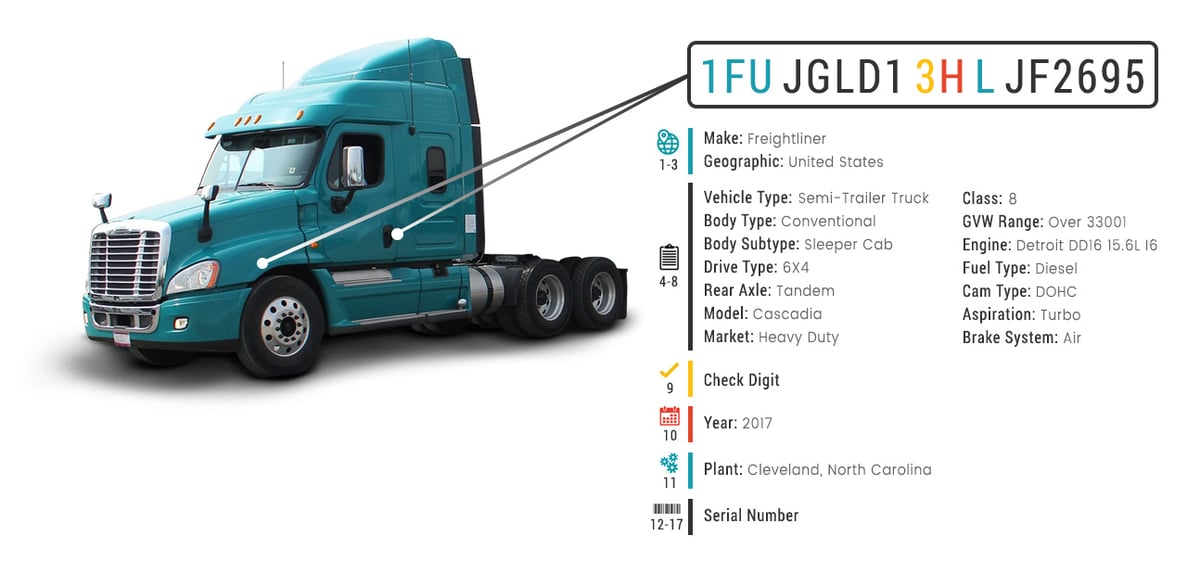Call: 877-438-8467
The vehicle identification number (VIN) is a unique string of numeric and alphanumeric characters assigned to a vehicle that contains information to describe and identify the vehicle. The VIN number for heavy-duty trucks can be located in a few different places, including the driver's side front frame rail, the driver's side door frame, above the sun visor, and inside the glove box.
In 1981, the 17-digit VIN was standardized by the NHTSA for vehicle destined for use in the U.S.
For more details on the history of the VIN, view our article "What is a VIN?"
Medium and heavy-duty truck VIN numbers encode much of the core vehicle information, including year, make, model, engine, body and drive type, passenger restraint system, when and where they were manufactured, and the serial number. However, some of the information encoded in the vehicle descriptor section (positions 4-8) is subject to vary across OEMs.
See detailed descriptions on what's encoded in the VIN in this blog article or view the sample VIN breakdown below.

Though passenger/light-duty vehicles and medium/heavy-duty vehicles are much different, the VIN structure is the same. However, there are some differences in what details are captured within the vehicle descriptor section of the VIN (positions 4-8). For example, medium and HD VINs will almost always encode axle type, vehicle class, and brake system, which are either not applicable or less important for passenger/light-duty vehicles.
What's a VIN Squish or VIN Pattern? These two terms are actually interchangeable, both describing the portion of the VIN where core information is encoded. The VIN pattern/squish is made up of positions 1-8, 10, and 11.
These are just two of the many terms centered around VINs and vehicle data. View this blog article to become a master on VIN terminology.
VIN decoding medium-duty trucks, or any commercial trucks for that matter, can be challenging given the amount of customization done to these vehicles post-manufacture. For medium-duty trucks, this includes upfitting the chassis with different body types, such as a flatbed, platform/stake, utility/service, RV, dump, or tow body. The cab may also be upfitted and the engine, transmission, or axles may be upgraded as well.
Unfortunately, this information cannot be identified by decoding the VIN since the VIN is assigned prior to these customizations, at the time of manufacture. Still, it maybe be valuable for your business to identify the core information of medium-duty trucks.
View this article for further details on decoding medium trucks among other vehicles outside of the passenger/light-duty market.
Decoding HD vehicles is a similar challenge to the medium market. There is often a lot of customization with these large vehicles. However, the core information encoded in a heavy-duty truck VIN (as shown in the graphic above) is quite valuable for many businesses. In some cases, this might be all the information your business needs.
View this article for further details on decoding heavy-duty trucks among other vehicles outside of the passenger/light-duty market.
In addition to the VIN assigned for a semi tractor-trailer truck, the trailer will also have a VIN number which will provide details specific to the trailer. Some of these details include the make, country of manufacturer, trailer type and attachment, length, and axle count.